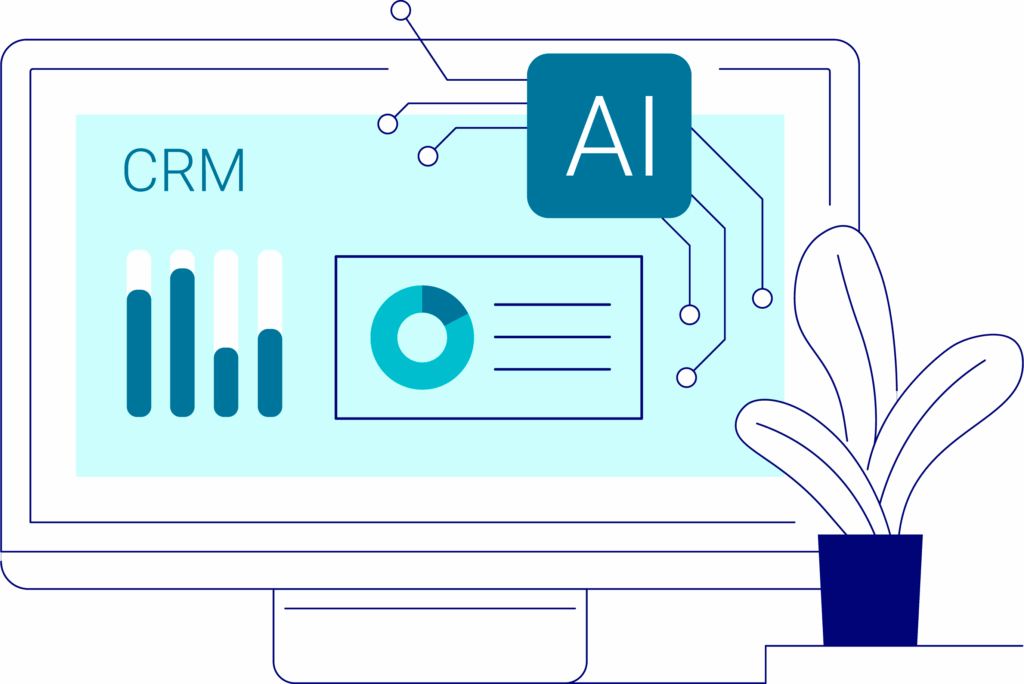How CRM and CMS Work Together and Why You Need Both
Let’s talk CRM and CMS. They sound similar, they both promise to make your life easier, and, if we’re honest, they sometimes get tossed around interchangeably. But here’s the thing, they’re not the same tool, and the businesses that treat them as distinct (yet complementary) systems are the ones that see the best results.
It’s time to unpack what CRM and CMS mean…
Explore the difference between CRM and CMS, and dig into how these platforms can work together to create a seamless customer and content experience. By the end, you’ll know exactly why both belong in your tech stack, and how to make them sing in harmony.
What Is a CRM?
CRM stands for Customer Relationship Management. Think of it as the digital Rolodex you always wished you had, except it’s smarter, prettier, and capable of tracking everything your customer does with your business.
At its core, a CRM is where you:

- Store contact details like emails, phone numbers, and job titles.
- Track deals and pipeline stages.
- Log interactions across marketing, sales, and service.
- Forecast revenue and report on team performance.
91% of companies with more than 11 employees now use a CRM system. That stat alone tells you how much of a necessity it’s become. A CRM is your central nervous system for customer-facing activity. Popular CRM platforms include HubSpot, Salesforce, Zoho, and Pipedrive.
What About a CMS?
CMS stands for Content Management System. This is where your website lives, breathes, and grows. If a CRM is your digital Rolodex, then a CMS is your digital storefront.
A CMS allows you to:

- Build and manage website pages without coding.
- Store and publish blogs, landing pages, and resources.
- Optimize content for SEO and conversions.
- Deliver personalized content based on visitor behavior.
WordPress alone powers over 43% of all websites today, which shows just how integral CMS platforms have become. HubSpot CMS, Drupal, Joomla, and Squarespace also fall into this category.
The Difference Between CRM and CMS
Here’s where the acronyms get messy, because while they serve different purposes, they’re connected at the hip. A CRM is about managing relationships. It’s the place where you log the history of each customer, nurture leads, and track your pipeline. A CMS, on the other hand, is about managing content. It’s the system where your website and digital experiences live.
To put it in plain English, your CRM knows who your customers are, while your CMS shapes what they see. Both are essential, and when they’re properly integrated, your business shifts from talking at customers to truly engaging with them.
Why You Need Both CRM and CMS
Imagine a visitor lands on your website, reads a blog, and downloads a whitepaper. Without a CRM, that’s just a number on a CMS dashboard. But when your CMS is connected to your CRM, that anonymous download turns into a real contact profile. You now know their name, email, and what they’re interested in.
From there, your CRM can:
1.
Enroll them in a nurturing workflow.
2.
Notify sales that a hot lead is warming up.
3.
Record every follow-up and meeting along the way.
Meanwhile, your CMS keeps adapting the experience, showing them more relevant content, surfacing the right calls-to-action, and driving them further down the funnel.
Companies that align CRM and CMS see real impact. A study from Nucleus Research found that companies using integrated CRM solutions see an average ROI of $8.71 for every dollar spent. Pair that with a CMS that increases web engagement, and the growth potential becomes obvious.
What Happens If You Only Use One?
CRM Without a CMS:
You’ve got the data but no stage. Your sales team knows who the prospects are, but your marketing team struggles to deliver engaging, trackable content.
CMS Without a CRM:
You’ve got the stage but no spotlight. People visit your website, but you don’t know who they are, what they want, or how to follow up.
Neither scenario is ideal. You need both sides of the coin to truly understand and serve your audience.
How CRM and CMS Work Together in Practice
When CRM and CMS are connected, the real magic starts to happen. One of the most powerful outcomes is personalized web experiences. Instead of serving the same generic homepage to everyone, your CMS can adapt based on data stored in your CRM. If a visitor from the healthcare industry returns to your site, the system can automatically highlight case studies, blog posts, or solutions relevant to their world. A director of operations will see different content than a marketing coordinator, because your CRM knows their role and passes that information along. Suddenly, your website is a dynamic experience that feels tailored to each visitor.
This integration also takes lead nurturing to the next level. Imagine someone downloading an eBook from your website. Without a CRM, that’s just another anonymous conversion. But with a CRM connected to your CMS, that form submission becomes the trigger for a full nurture sequence. The contact is automatically enrolled in a workflow with targeted emails, timed follow-ups, and even notifications to your sales team if engagement spikes.
Closed-loop reporting is another major advantage. Too often, marketing teams can’t connect the dots between their website activity and actual sales. By combining CRM and CMS data, you can finally answer the questions that matter: Which blog post is driving the most revenue? Which landing page is converting high-quality leads into paying customers? Instead of vanity metrics like clicks and impressions, you get insights that tie directly to the bottom line.
Finally, customer service gets a serious boost. With integrated systems, your support team isn’t flying blind when a customer calls in with an issue. They can see a complete record of the customer’s website interactions, including what resources they’ve viewed, which products they’ve researched, and even how often they’ve returned to your site. That context makes it easier to solve problems quickly and provide a friendlier, more personalized experience.
Common Pitfalls to Avoid
When bringing CRM and CMS together, businesses often run into a few avoidable mistakes:

Siloed Teams
Marketing owns the CMS, sales owns the CRM, and no one talks. Break down that wall early.

Overcomplication
Fancy integrations are great, until they require a full-time admin to maintain. Start simple, then scale.

Ignoring Data Hygiene
Garbage in, garbage out. If your CRM data is messy, your CMS personalization will be too.
The Future of CRM and CMS
CRMs are using AI to predict lead scoring and automate outreach.
CMS platforms are using AI to generate content, optimize SEO, and personalize at scale.
Imagine a website that adapts in real-time based on CRM signals, or a CRM that recommends the next best piece of content to send. That’s not far away in the future.

Wrapping It All Up
A CRM manages relationships, while a CMS manages content. The difference between CRM and CMS is clear, but the real value comes when the two work together. With both systems aligned, you can personalize every customer experience, track ROI with precision, and strengthen relationships at every stage of the journey.
Integration is the bridge that connects your data to the experiences your customers expect. When CRM and CMS are in sync, your business stops guessing and starts growing.
At Vonazon, we’ve helped businesses untangle their tech stacks, integrate CRM and CMS systems, and create that elusive single source of truth. If you’re ready to see what that kind of clarity can do for your business, we’d love to help you get there.






